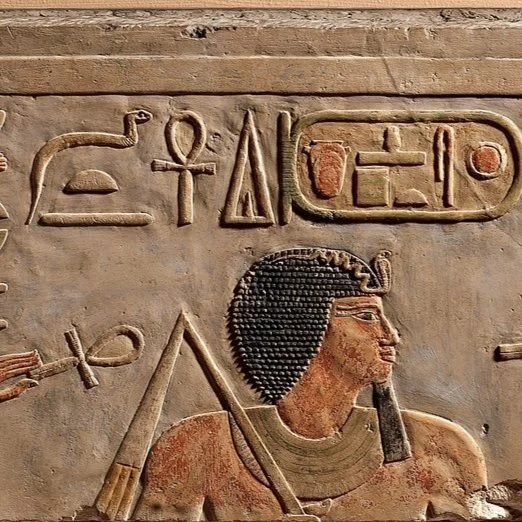
Scandinavian Literary Tours to Egypt
Following Scandinavian Footsteps Along the Nile
The Sinuhe Experience: Exploring Ancient Egypt Through Waltari’s Eyes
Duration: 10 days
Based on: “The Egyptian” by Mika Waltari (Finnish, 1945)
Finland’s Mika Waltari created one of the most beloved historical novels about ancient Egypt with “Sinuhe egyptiläinen” (The Egyptian), which gained international fame and remains the only Finnish novel adapted into a Hollywood film.
This comprehensive tour takes travelers through the world of Sinuhe, the royal physician, during the time of Pharaoh Akhenaten,
Itinerary Highlights:
•Days 1-3: Cairo - Begin at the Egyptian Museum to view artefacts from the 18th Dynasty, when Akhenaten ruled. Visit the pyramids of Giza and the Sphinx to understand the ancient Egyptian context of Sinuhe’s world.
•Days 4-5: Amarna - Explore the ruins of Akhenaten’s capital city, central to the novel’s setting.
•Days 6-8: Luxor - Discover ancient Thebes through visits to Karnak and Luxor temples, crucial settings in the novel. Explore the Valley of the Kings, where many pharaohs from Sinuhe’s era were buried.
•Days 9-10: Aswan - Experience the southern frontier of ancient Egypt and enjoy a felucca ride on the Nile while discussing the novel’s historical accuracy with an Egyptologist.
Strindberg’s Egypt
Duration: 7 days
Based on: “Egyptiska träldomen” by August Strindberg (Swedish)
August Strindberg, one of Sweden’s most acclaimed authors, wrote about Egypt in works such as “Egyptiska träldomen” (The Egyptian Bondage). This literary journey explores the Egypt that captivated Strindberg’s imagination.
Itinerary Highlights:
•Days 1-2: Cairo - Visit the Coptic Museum and Old Cairo to understand the religious context of Strindberg’s work.
•Days 3-4: Nile Delta - Explore the region where the Israelites supposedly lived during their time in Egypt, a central theme in Strindberg’s text.
•Days 5-6: Sinai Peninsula - Follow the alleged Exodus route that inspired parts of Strindberg’s writing.
•Day 7: Alexandria - Visit the Bibliotheca Alexandrina and discover how ancient knowledge influenced Strindberg’s thinking.
Alexandria Memories: In the Footsteps of Niels Fredrik Dahl
Duration: 6 days
Based on: “Fars rygg” by Niels Fredrik Dahl (Norwegian)
This poignant tour is based on Norwegian author Niels Fredrik Dahl’s novel “Fars rygg,” which is partly set in Alexandria. The novel explores a father-son relationship across three generations, with the father having grown up in Alexandria in the 1920s where his own father served as a judge in the mixed courts.
Itinerary Highlights:
•Days 1-3: Alexandria - Explore the colonial architecture and Mediterranean coastline. Visit the mixed courts where international judges once worked alongside Egyptians.
•Day 4: Montaza Palace - Discover the royal residence and surrounding gardens that represent Alexandria’s cosmopolitan past.
•Day 5: Bibliotheca Alexandrina - Explore this modern tribute to the ancient library, with special attention to Norwegian-Egyptian cultural connections.
•Day 6: Corniche and Cecil Hotel - Walk along the famous seafront and visit historic hotels where European expatriates gathered.
Anne Edelstam’s Egypt
Duration: 10 days
Based on: “Tre damer i Kairo : en personlig skildring av Egypten” by Anne Edelstam (Swedish)
Swedish author Anne Edelstam’s novel “Tre damer i Kairo” offers a fictionalized true story following three generations of Swedish women: grandmother Hilda, mother Ingrid, and Anne herself discovering Egypt throughout the twentieth century’s social changes, up to Egypt’s first free elections in June 2012.
This comprehensive 10-day itinerary follows the footsteps of the three Swedish women featured in Anne Edelstam’s novel, exploring the locations and themes that shaped their experiences across a century of Egyptian history. The tour combines historical sites, cultural landmarks, and literary connections to create an immersive journey through both ancient and modern Egypt.
Itinerary Highlights:
•Day 1-4: Cairo: The Heart of Three Generations:
Garden City District
Begin your literary journey in Garden City, one of Cairo’s most prestigious neighborhoods where the Swedish families likely lived. This historic district, established in 1906 by Khedive Abbas Helmy II, features European-style architecture with French, Italian, and Islamic influences. Take a walking tour through the tree-lined streets to appreciate the elegant palaces and buildings that housed Cairo’s elite international community during the early 20th century.
Swedish Embassy in Zamalek
Visit the current Swedish Embassy located at 13 Mohamed Mazhar Street in Zamalek. While the embassy’s current location may differ from the historical diplomatic quarters, Zamalek itself represents the cosmopolitan Cairo that the Swedish diplomatic families would have known. This upscale island neighborhood has been a mirror of Egypt’s social and political transformations over the past century.
The Mixed Courts Area
Explore downtown Cairo where the Mixed Courts of Egypt operated from 1875 to 1949. These courts, where Torsten Salén (Hilda’s husband) worked as a judge, were located in Cairo, Alexandria, and Mansoura, with proceedings conducted in French. The Mixed Courts were instrumental in Egypt’s legal modernization and reflected the international character of Egyptian society during this period.
Khedivial Opera House Site (Historical)
Visit Opera Square (Meidan El Opera), the site of the original Khedivial Opera House where Hilda and her husband would have attended performances. Though the original opera house burned down in 1971, the square still bears its name. The opera house, inaugurated in 1869 to celebrate the opening of the Suez Canal, was where Verdi’s “Aida” premiered in 1871.
•Day 5: Alexandria - Coastal Elegance and European Influence:
Alexandria’s Golden Age
Experience Alexandria as Ingrid knew it during her childhood summers in the 1930s and 1940s. Visit the historic Corniche and explore the areas where wealthy international families would have had their summer residences. Alexandria served as a major British naval base during World War II, which would have shaped Ingrid’s wartime experiences.
Qaitbay Citadel and Pompey’s Pillar
Explore these iconic Alexandrian monuments that have witnessed centuries of history. The Qaitbay Citadel, built on the site of the ancient Lighthouse of Alexandria, represents the city’s maritime heritage. Pompey’s Pillar, a monument honoring Emperor Diocletian, connects to Alexandria’s Roman past.
Modern Library of Alexandria
Visit the contemporary Library of Alexandria, built on the site of the ancient library. This modern cultural center represents Alexandria’s continued role as a hub of learning and international exchange, themes central to the Swedish family’s story.
•Day 6-8: Luxor - Ancient Wonders and Timeless Egypt: Valley of the Kings
Explore the royal burial ground that represents the “eternal Egypt” that fascinated all three generations of Swedish women. The elaborate tombs, including that of Tutankhamun, showcase the ancient civilization that provided such a dramatic contrast to Swedish culture.
Karnak and Luxor Temples
Visit these magnificent temple complexes that embody the grandeur of ancient Thebes. These sites represent the “unchanging Egypt” that captivated foreign residents and provided a sense of continuity despite modern political upheavals.
Nile Felucca Experience
Take a traditional felucca sailing trip on the Nile, experiencing the river as countless generations have before. This connects to Anne’s description of Egypt’s timeless landscapes and the contrast between ancient and modern life.
•Day 9: Return to Cairo - Modern Egypt and Women’s Legacy:
Huda Sha’arawi Historical Sites
Visit locations associated with Huda Sha’arawi (Hoda Sharaawi), the pioneering Egyptian feminist who was Hilda’s friend in the novel. Explore areas of downtown Cairo where Sha’arawi conducted her women’s rights activities, including the founding of the Egyptian Feminist Union in 1923.
Egyptian Museum
Explore the Egyptian Museum in Tahrir Square, housing artifacts that span the entire period covered in the novel. This museum represents the continuity of Egyptian civilization that fascinated the Swedish women across three generations.
Khan El Khalili Bazaar
Experience the traditional market that would have been a constant throughout all three women’s experiences in Cairo. The bazaar represents the authentic Egyptian culture that both fascinated and sometimes challenged the Swedish residents.
Day 10: Reflection and Contemporary Egypt:
Modern Cairo Opera House
Visit the current Cairo Opera House in Zamalek, which opened in 1988 as a gift from Japan. This represents the continuation of Egypt’s cultural traditions that Hilda and her husband would have appreciated at the original Khedivial Opera House.
Contemporary Literary Cairo
Explore Cairo’s modern literary scene by visiting Diwan Bookstore in Zamalek, where Anne Edelstam launched the Arabic translation of her book in 2016. This connects the historical narrative to contemporary cultural dialogue between Sweden and Egypt.



